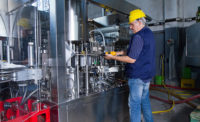Has your pet enriched your life?
Pet owners surely actively care for their pets. And the reciprocal benefits from our pets surpass any costs, right? How do those benefits both reflect and influence actively caring for people (AC4P) behavior? Actively caring for pets can improve one’s quality of life, family culture, and the human condition, as derived from empirical research and personal experience.
Conclusions from research
More than 50 percent of households in the world have a pet. More than 60 million pet dogs and nearly 70 million pet cats reside in the U.S. alone. In several questionnaire surveys of pet owners, researchers observed a common theme: More than 50 percent of pet owners talk to their pets frequently, as if they were people, and consider their pets to be sensitive to their moods. When close and affectionate contact with others is needed, the family pet can be extremely beneficial.
Human-pet relationships can help individuals deal with family crises and emotional distress. Plus, pets facilitate pleasure, fun, humor, and exercise. Some pets also provide security and protection, as well as a way to teach children responsibility and a respect for life.
Researchers found that simply viewing aquarium fish lowered blood pressure. Even without physical contact, a pet can provide a soothing and relaxing atmosphere. Some pets help people socialize with others, and often increase duration of survival after a heart attack. Pets are often a replacement or a surrogate for a human relationship, and prevent episodes of depression.
Cultivating an attachment with a pet protects people from the debilitating effects of distress; relieves loneliness and depression; provides interdependent comfort and friendship; and serves as an activator and supporter of healthy recreation and exercise.
Exploring the AC4P value of pets
My master’s thesis research at Virginia Tech used a survey with 12 open-ended questions to explore the impact of a pet on relationships between its caretaker and other family members. A total of 966 students completed the survey. Of these, 82 respondents (85.4 percent) indicated a pet had influenced their life in important ways.
The results of my study supported the premise that pets can decrease distress and anxiety, and provide personal comfort and protection. Respondents described their pets as “keeping the peace,” “providing an escape,” “nuzzling for attention,” “lovable,” “consistent,” “dependent,” “non-authoritative,” “building self-esteem,” “listening,” and “providing brighter days.” They are “happy to have you around,” and they maintain a friendly countenance that benefits individuals’ moods and their interactions with other family members.
The unconditional love a pet bestows on a family exemplifies the AC4P behavior family members need to show toward each other. Many pets were described as great listeners who never pass critical judgment, never interrupt, never force their opinions, and never hold a grudge.
Research respondents indicated the family pet is often perceived as a tremendous source of joy. They look forward to seeing their pet when they come home; they confide their worries to their pet; and they know their pet has unconditional positive regard for them. Self-esteem can be boosted by a pet who shows genuine appreciation for simple acts of affection, kindness, and caring. The family pet welcomes and reciprocates unconditional love.
Quantifying human-pet attachment
My research measured the degree of attachment pet-owners feel toward their pets. A total of 398 pet owners, ranging in age from 18 to 87, completed a 34-item pet-attachment scale (PATS) that asked respondents about their emotional connection to their pets and how their pets influence their lives. Companionship and emotional fulfillment were found to be two distinct AC4P functions of pets.
Benefits of human-animal relationships
The amount of responsibility people felt toward their pet was the strongest predictor of the degree-of-attachment scores on the PATS, as common sense suggests. The other predictors of pet attachment were gender and the favorite pet chosen. Women showed greater attachment to their pets and more caretaking for pets.
Participants who did not choose a favorite pet scored highest on the PATS, followed by dog lovers and then cat lovers. Those who had a pet other than a cat or a dog showed the least amount of attachment. Interestingly, pet owners who did not choose a particular pet as their favorite showed the most attachment. These individuals probably had more than one pet and could not choose a favorite among them. I did find a significant positive correlation between number of pets and attachment scores on the PATS.
Emotional fulfillment
The emotional fulfillment factor reflects a heartfelt AC4P connection to one’s pet. Emotional fulfillment is not typically viewed as being independent from companionship in human-animal relationships. But my dissertation showed it’s possible to find both companionship and emotional fulfillment in a companion animal, and it’s possible to experience just one and not the other.
Companionship
Companionship translates into shared activities with one’s pet -- riding a horse, walking a dog, playing with a cat, singing with a bird, and similar behaviors. And these can be mutual AC4P behaviors. People like to do things with their pets; they enjoy the company of their pets; and they have genuine compassion for their pets.
To conclude
Pets are powerful AC4P agents in family relationships. Most research respondents commented that their pets are “influential,” “consistent,” “happy to have you around,” “an escape,” “listeners,” “dependent,” “lovable,” and “always there.”
Pets actively care unconditionally, and in turn likely increase the recipient’s propensity to perform AC4P behavior for others. Emotional fulfillment and companionship determine the degree of human-pet attachment. Pets give owners something to actively care about, provide a special comradeship, and offer opportunities to experience AC4P bonding.




